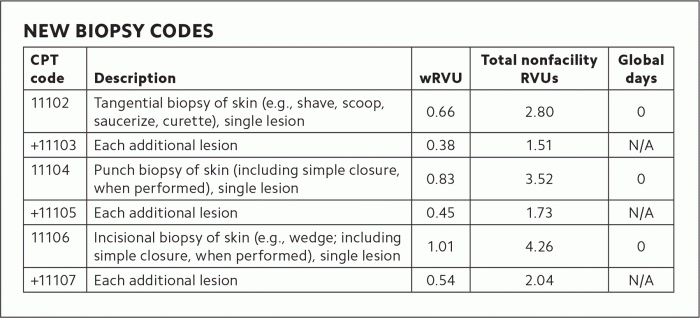Navigating the complexities of medical billing can be daunting, but understanding the CPT code for removal of cast is crucial for healthcare professionals. This code plays a pivotal role in ensuring accurate reimbursement for this essential procedure, empowering providers to deliver optimal patient care.
As we delve into the intricacies of cast removal, we’ll explore its medical necessity, billing considerations, and patient education, equipping you with the knowledge and tools to navigate this aspect of medical practice with confidence.
CPT Code Definition

CPT codes are a set of standardized codes used in medical billing to describe the services and procedures provided by healthcare professionals.
The specific CPT code for removal of a cast is 29580.
The CPT code for removal of a cast is a specific code used for medical billing. It’s important to use the correct code to ensure accurate reimbursement. If you’re studying AP Biology Unit 7, you might find it helpful to check out ap bio unit 7 mcq part a for some practice questions.
Once you’ve reviewed the material, you can come back and continue learning about the CPT code for removal of cast.
Procedure Description

The removal of a cast involves several steps and requires specific equipment.
Before the procedure, the healthcare professional prepares the patient by explaining the process and obtaining their consent. The area surrounding the cast is cleaned and disinfected to prevent infection.
Equipment Used
The equipment used for cast removal typically includes:
- Cast saw or shears
- Scissors
- Gauze or bandage
- Antiseptic solution
Steps Involved
The healthcare professional carefully cuts the cast using the saw or shears, starting from one end and working towards the other. They take precautions to avoid damaging the underlying skin. Once the cast is removed, the skin is inspected for any signs of irritation or damage.
The area is then cleaned and dressed with gauze or bandage to protect it.
Medical Necessity: Cpt Code For Removal Of Cast

Cast removal is medically necessary when the underlying injury or condition has healed sufficiently to no longer require immobilization. This includes situations where the cast has become too tight or uncomfortable, causing pain or skin irritation.
Specific injuries or illnesses that may require cast removal include:
Fractures
- Once the fracture has healed and is stable, the cast can be removed to allow for movement and rehabilitation.
- If the cast is not removed when the fracture has healed, it can hinder bone growth and range of motion.
Sprains and Strains
- When the sprain or strain has healed and the ligaments or muscles are stable, the cast can be removed to restore movement.
- Keeping the cast on for too long can weaken the muscles and ligaments, making them more susceptible to future injuries.
Dislocations
- Once the dislocation has been reduced and the joint is stable, the cast can be removed to allow for range of motion exercises.
- Prolonged immobilization in a cast can lead to joint stiffness and decreased range of motion.
Billing Considerations
Billing for cast removal is influenced by various factors, including:
- Type of cast:Simple casts are billed differently from complex or specialized casts.
- Location of cast:Casts on the upper extremity (arm and hand) are typically billed differently from those on the lower extremity (leg and foot).
- Procedure complexity:Removal of a cast that requires extensive debridement or irrigation may be billed differently from a simple cast removal.
- Patient’s age:Medicare has different billing rules for cast removal in children compared to adults.
Modifiers and Documentation Requirements
When billing for cast removal, it is important to use the appropriate modifiers to indicate the specific circumstances of the procedure. Common modifiers include:
- Modifier 22:Indicates that the procedure was performed on a subsequent day.
- Modifier 59:Indicates that the procedure was performed separately from other procedures.
- Modifier LT:Indicates that the procedure was performed on the left side.
- Modifier RT:Indicates that the procedure was performed on the right side.
Proper documentation is also crucial for accurate billing. The medical record should include:
- The type of cast removed
- The location of the cast
- The date and time of the procedure
- The name of the provider who performed the procedure
Patient Education

Following cast removal, patients receive comprehensive instructions to ensure optimal wound care and recovery.
These instructions typically include:
Wound Care
- Keep the wound clean and dry.
- Change dressings as directed.
- Avoid submerging the wound in water until it is fully healed.
Activity Restrictions
- Limit strenuous activity that could put pressure on the affected area.
- Follow doctor’s orders regarding weight-bearing limitations.
- Use assistive devices (e.g., crutches, walker) as prescribed.
Follow-up Appointments, Cpt code for removal of cast
- Attend all scheduled follow-up appointments to monitor progress and ensure proper healing.
- Report any concerns or complications promptly to the doctor.
FAQ Compilation
What is the CPT code for removal of cast?
The CPT code for removal of cast is 29585.
What factors influence billing for cast removal?
Factors influencing billing include the type of cast, the complexity of the removal, and the geographic location of the practice.
What documentation is required for cast removal billing?
Documentation should include the patient’s medical history, the reason for the cast removal, and a description of the procedure.
